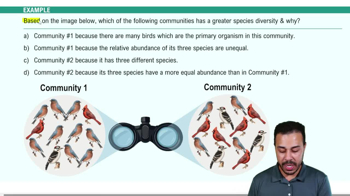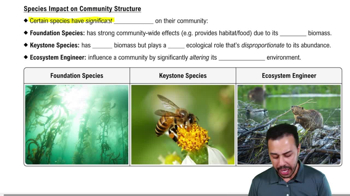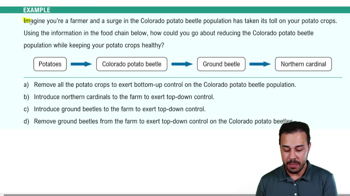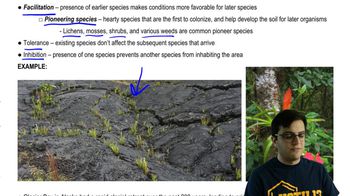51. Community Ecology
Community Structure
51. Community Ecology
Community Structure
Showing 8 of 8 videos
Additional 33 creators.
Learn with other creators
Showing 36 of 36 videos
Practice this topic
- Multiple ChoiceA field contains 950 kg of plant material. How many kilograms of tertiary consumers could be supported?1388views
- Multiple ChoiceWhy does succession of communities occur?1523views
- Multiple ChoiceWhat is the current view of biological communities?1610views1rank
- Multiple ChoiceWhich of the following statements correctly describes conditions on a glacier moraine during the reign of pioneer species?958views
- Textbook Question
The feeding relationships among the species in a community determine the community's
a. Secondary succession
b. Ecological niche
c. Species richness
d. Trophic structure
1274views - Textbook Question
Based on the intermediate disturbance hypothesis, a community's species diversity is increased by
a. Frequent massive disturbance
b. Stable conditions with no disturbance
c. Moderate levels of disturbance
d. Human intervention to eliminate disturbance
1459views - Textbook Question
According to the island equilibrium model, species richness would be greatest on an island that is
a. Large and remote
b. Small and remote
c. Large and close to a mainland
d. Small and close to a mainland
1063views - Textbook Question
Pioneer species tend to have high ________ and lower survivorship.
935views












































